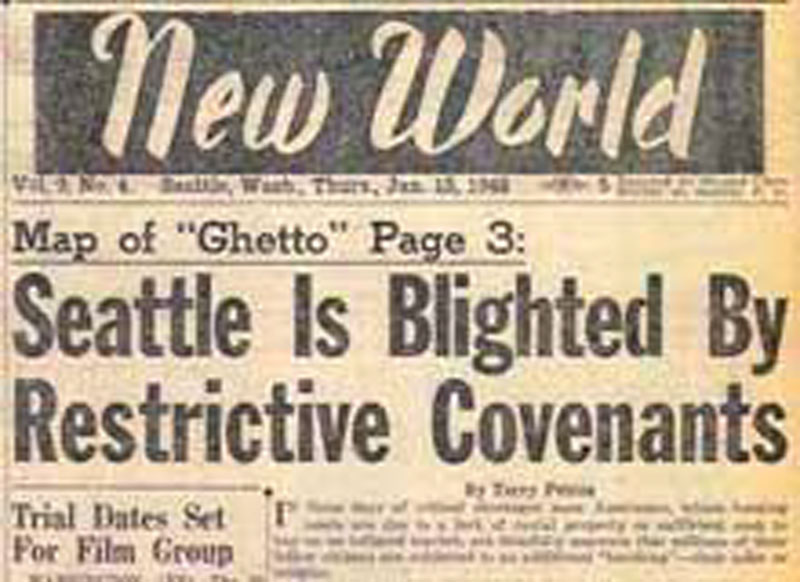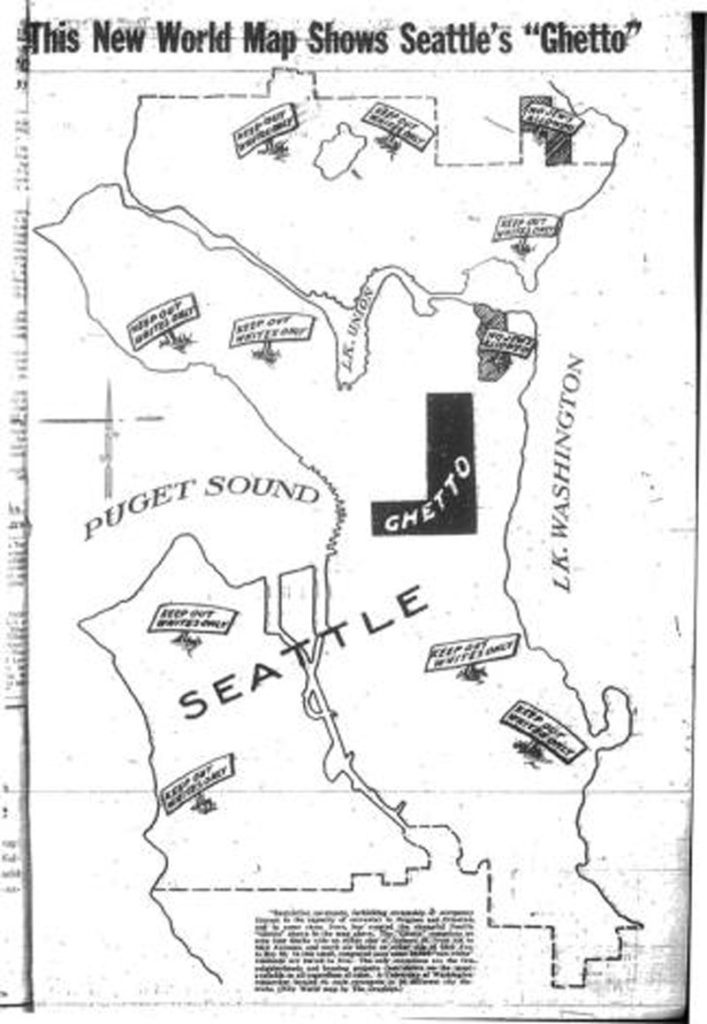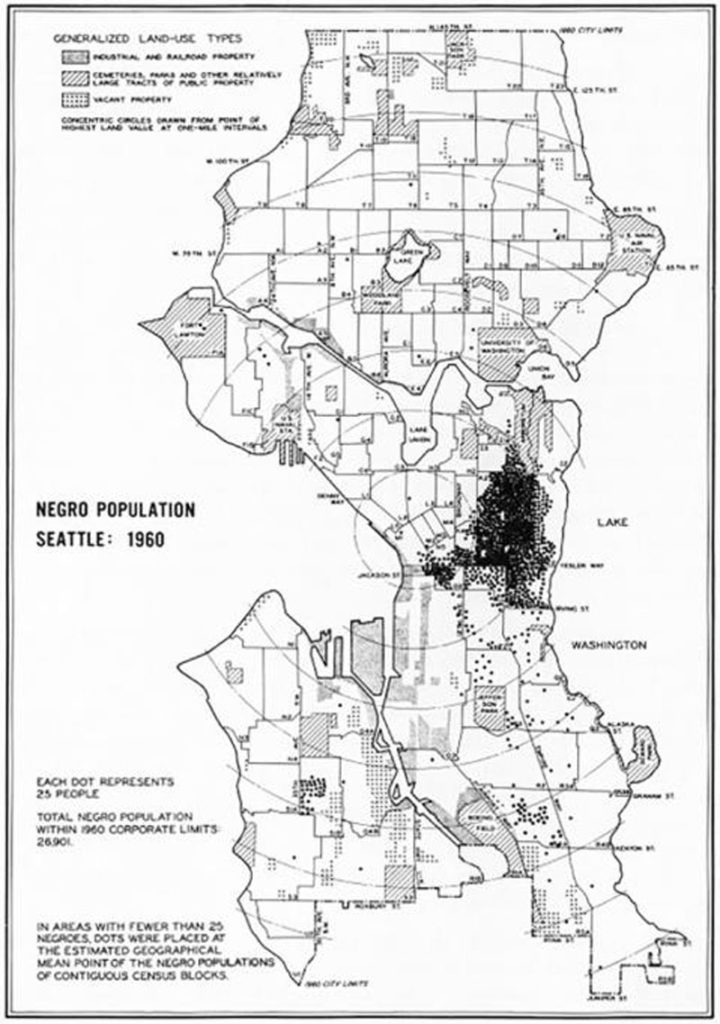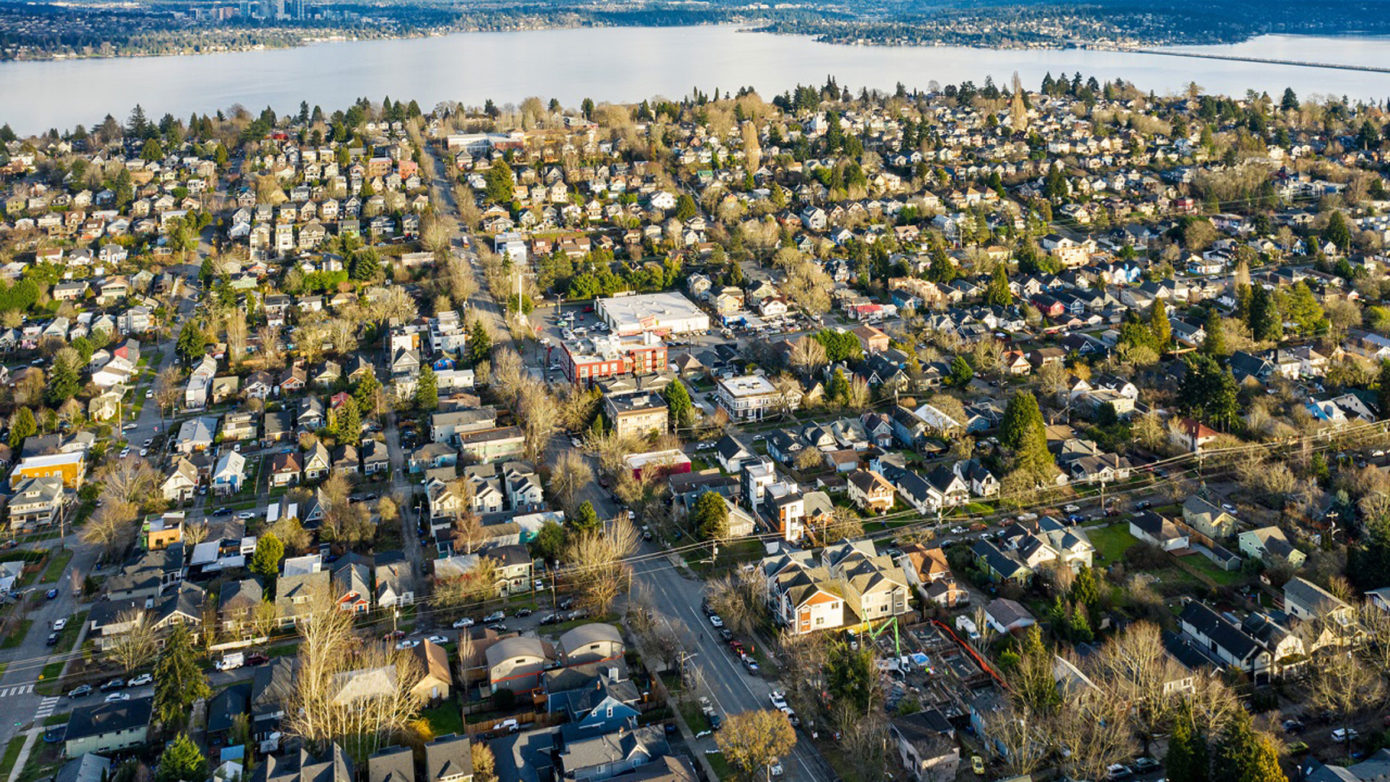Part 1
The Central District, also sometimes referred to as the Central Area, is a neighborhood of four square miles in the geographic center of Seattle. It was synonymous with the city’s Black community for almost a century. Recent transplants to Seattle, however, may find that on the surface, the CD’s character and boundaries now blur together with neighboring areas like Madrona and Capitol Hill. In recent years, many of the long-established Black families of the CD have dispersed to the southern suburbs and beyond, while too many of the CD’s churches, Black-owned businesses, and cultural traditions are consigned to memory.
The story of the past 100 years in the CD is not only one of Black pride, entrepreneurship, and community — but also of discrimination, redlining, activism, and displacement.
Early history of the CD
In 1882, William Grose, one of the most famous men in Seattle — and its second Black resident — bought 12 wooded acres in central Seattle for $1,000 in gold coin from another famous pioneer, Henry Yesler. Grose established a farm and eventually logged and platted the acreage. Over the next 20 years, the area that Grose settled became a stable, middle-class community. His farmhouse at 24th Ave and Howell St still stands, and is now the oldest building to be continuously occupied by a Black person in Washington state, according to historian Esther Mumford.
 At the same time, a second center of Black community developed in the Yesler-Jackson area at the south end of downtown, with a more transient and low-wage population of workers. The area was known for its entertainment industry, including a vibrant jazz music scene. As these two distinct Black communities grew, they eventually merged into one neighborhood, known as the Central District, or Central Area. Early Black residents began to organize to defend their rights and interests. Branches of the NAACP, National Urban League, and the Universal Negro Improvement League were formed there in the 1910s.
At the same time, a second center of Black community developed in the Yesler-Jackson area at the south end of downtown, with a more transient and low-wage population of workers. The area was known for its entertainment industry, including a vibrant jazz music scene. As these two distinct Black communities grew, they eventually merged into one neighborhood, known as the Central District, or Central Area. Early Black residents began to organize to defend their rights and interests. Branches of the NAACP, National Urban League, and the Universal Negro Improvement League were formed there in the 1910s.
Restrictive Covenants
Black residents were not just increasingly drawn to the CD for its culture and community, but confined there due to segregation. Beginning in the 1920s, politicians, homeowners, and the real estate industry collaborated to implement racially restrictive covenants in many Seattle neighborhoods. A restrictive covenant legally prohibits a homeowner from selling to members of the groups listed in the covenant, if that covenant is included on the property’s deed or plat map. Covenants became a popular tool of segregation in the U.S. after a 1917 Supreme Court ruling found city segregation ordinances violated the Equal Protection Clause of the 14th Amendment.
 Land developers, including Seattle icon William Boeing, and real estate companies wrote most of the region’s racially restrictive covenants. It was an unfortunately simple matter to place restrictive covenants on a title before the properties were sold to individual owners. Infamously, a group of neighbors organized their own campaign to exclude Black residents from Capitol Hill, a long-established neighborhood which adjoins the Central District. The covenant, eventually signed by over 900 individual homeowners during the 1920s, specified that their properties would never be “used or occupied by or sold, conveyed, leased, rented or given to Negroes, or any person or persons of the Negro blood.” Other neighborhoods where covenants were implemented property-by-property included Queen Anne and Madison Park (adjacent to Broadmoor).
Land developers, including Seattle icon William Boeing, and real estate companies wrote most of the region’s racially restrictive covenants. It was an unfortunately simple matter to place restrictive covenants on a title before the properties were sold to individual owners. Infamously, a group of neighbors organized their own campaign to exclude Black residents from Capitol Hill, a long-established neighborhood which adjoins the Central District. The covenant, eventually signed by over 900 individual homeowners during the 1920s, specified that their properties would never be “used or occupied by or sold, conveyed, leased, rented or given to Negroes, or any person or persons of the Negro blood.” Other neighborhoods where covenants were implemented property-by-property included Queen Anne and Madison Park (adjacent to Broadmoor).
Not only were African Americans largely prohibited from living outside the Central District, but after the Great Depression, mortgage banks and the federal government made homes in the CD much less valuable through a practice called “redlining,” which greatly reduced Black wealth.
 In Seattle, the CD was described as containing homes that were “generally old and obsolete, in need of extensive repairs.” (It was, after all, one of oldest neighborhoods in the city.)
In Seattle, the CD was described as containing homes that were “generally old and obsolete, in need of extensive repairs.” (It was, after all, one of oldest neighborhoods in the city.)
The CD had officially been redlined.
Afterwards, Black homeowners found it much more difficult to get loans to purchase or refinance a home — or to get a loan to pay for improvements or repairs to their property.
By 1940, the Black homeownership rate in Seattle was 29%, second in the nation only to Los Angeles at 30%. But that rate represented a decline in Black homeownership from the 1930s, as African Americans in the CD had lost their homes to foreclosure during the Depression at a significantly higher rate than whites, and redlining had made it more difficult for Black residents in the CD to refinance or repurchase their homes.
African Americans first began to arrive in Seattle in large numbers in the 1940s, as part of the Second Great Migration. Tens of thousands of Black Americans migrated to West Coast cities during this time to seek work in the defense industry — and to escape the intense discrimination they still faced in the South. By 1942, a major increase in wartime production had exhausted the Pacific Northwest’s local labor pools for aviation, shipbuilding, and munitions, and the federal government began recruiting workers in the South for plants in the northwest. In just ten years, Seattle’s Black population grew 300%, to almost 16,000 residents by 1950.


Headline and graphic from the New World local newspaper, 1948: “Seattle Is Blighted By Restrictive Covenants”
As the 1960s began, Seattle remained highly segregated. Many real estate agents defended the status quo, based on the belief that integration in housing would hurt property values. When an ordinance against housing discrimination was proposed in Seattle in the 1960s, the real estate industry opposed it as “forced housing,” “dictatorial, confiscatory, and would lead to evasion and disrespect for the law.” (The Seattle Times, 1961, quoted in “The Seattle Open Housing Campaign, 1959-1968.”)

Geographic distribution of the Black population of Seattle in 1960, from Historylink.



